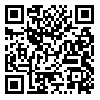Volume 17, Issue 2 (Summer 2022)
Salmand: Iranian Journal of Ageing 2022, 17(2): 290-303 |
Back to browse issues page
Download citation:
BibTeX | RIS | EndNote | Medlars | ProCite | Reference Manager | RefWorks
Send citation to:



BibTeX | RIS | EndNote | Medlars | ProCite | Reference Manager | RefWorks
Send citation to:
Bani Ardalan H, Motalebi S A, Shahrokhi A, Mohammadi F. Effect of Education and Telephone Follow-Up on Care Burden of Caregivers of Older Patients with Stroke. Salmand: Iranian Journal of Ageing 2022; 17 (2) :290-303
URL: http://salmandj.uswr.ac.ir/article-1-2171-en.html
URL: http://salmandj.uswr.ac.ir/article-1-2171-en.html
1- Student Research Committee, Qazvin University of Medical Science, Qazvin, Iran.
2- Research Institute for Prevention of Non Communicable Diseases, Social Determinants of Health Research Center, Qazvin University of Medical Sciences, Qazvin, Iran.
3- Research Institute for Prevention of Non Communicable Diseases, Social Determinants of Health Research Center, Qazvin University of Medical Sciences, Qazvin, Iran. ,mohammadi1508@gmail.com
2- Research Institute for Prevention of Non Communicable Diseases, Social Determinants of Health Research Center, Qazvin University of Medical Sciences, Qazvin, Iran.
3- Research Institute for Prevention of Non Communicable Diseases, Social Determinants of Health Research Center, Qazvin University of Medical Sciences, Qazvin, Iran. ,
Abstract: (6009 Views)
Objectives Stroke is the second leading cause of death and the third leading cause of disability worldwide. Caregivers of stroke patients experience high levels of care burden that can affect their physical and psychological health. It is necessary to use interventional programs for family caregivers to prevent or reduce their care burden. This study aims to determine the effect of education and telephone follow-up on care burden of the family caregivers of older patients with stroke.
Methods & Materials This randomized controlled clinical trial was conducted on 79 family caregivers of older patients with stroke admitted to the neurology department of Bu-Ali hospital in Qazvin, Iran who had been discharged in the past 1-6 months. Then, they were randomly divided into intervention and control groups by the block randomization technique. For the intervention group, 12 weeks of education and follow-up was presented through telephone and social media. Data were collected by demographic checklist, Barthel Index for Activities of Daily Living, and Zarit burden interview. The independent t‐test, paired t‐test, and chi‐square tests were used for analyzing the data.
Results Before the intervention, there was no significant difference between the two groups in the amount of care burden (26.20 ± 11.08 for intervention group and 28.70 ± 11.63 for the control group) (P = 0.333); however, after the intervention, the care burden of the intervention group (18.28 ± 10.07) and the control group (29.80 ± 11.76) showed a significant difference (P < 0.001). The results showed that 12 weeks of education & telephone follow-up caused a significant reduction in the care burden of the family caregivers (P< 0.001).
Conclusion The education and telephone follow-up can be a useful and cost-effective method for reducing the care burden of the family caregivers of older patients with stroke.
Methods & Materials This randomized controlled clinical trial was conducted on 79 family caregivers of older patients with stroke admitted to the neurology department of Bu-Ali hospital in Qazvin, Iran who had been discharged in the past 1-6 months. Then, they were randomly divided into intervention and control groups by the block randomization technique. For the intervention group, 12 weeks of education and follow-up was presented through telephone and social media. Data were collected by demographic checklist, Barthel Index for Activities of Daily Living, and Zarit burden interview. The independent t‐test, paired t‐test, and chi‐square tests were used for analyzing the data.
Results Before the intervention, there was no significant difference between the two groups in the amount of care burden (26.20 ± 11.08 for intervention group and 28.70 ± 11.63 for the control group) (P = 0.333); however, after the intervention, the care burden of the intervention group (18.28 ± 10.07) and the control group (29.80 ± 11.76) showed a significant difference (P < 0.001). The results showed that 12 weeks of education & telephone follow-up caused a significant reduction in the care burden of the family caregivers (P< 0.001).
Conclusion The education and telephone follow-up can be a useful and cost-effective method for reducing the care burden of the family caregivers of older patients with stroke.
Type of Study: Research |
Subject:
nursing
Received: 2021/01/23 | Accepted: 2021/07/28 | Published: 2022/07/01
Received: 2021/01/23 | Accepted: 2021/07/28 | Published: 2022/07/01
Send email to the article author
| Rights and permissions | |
 |
This work is licensed under a Creative Commons Attribution-NonCommercial 4.0 International License. |








